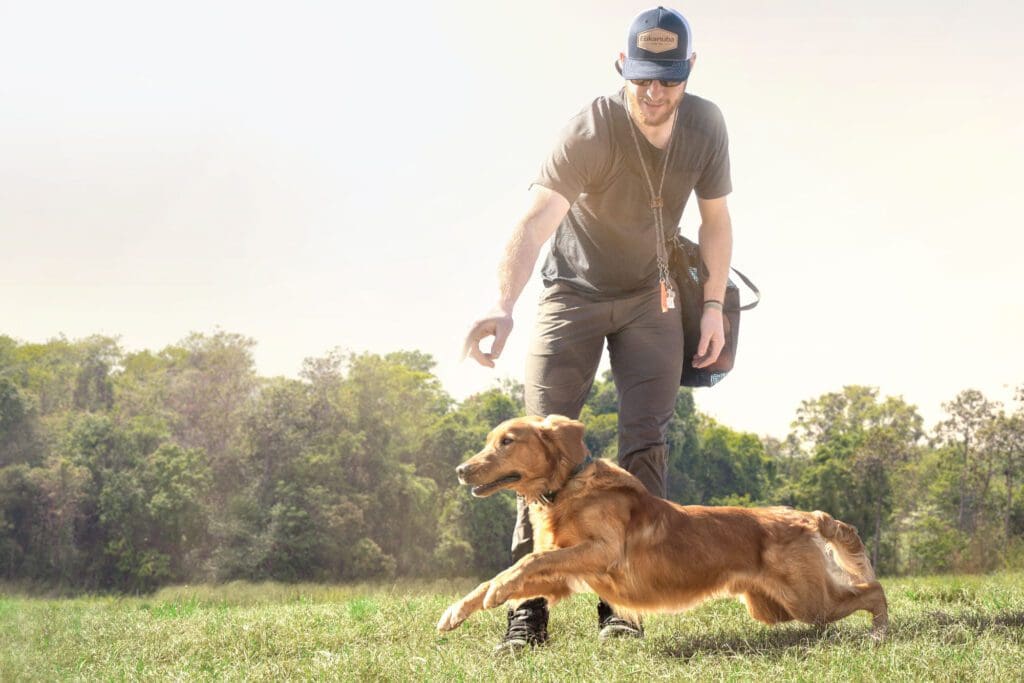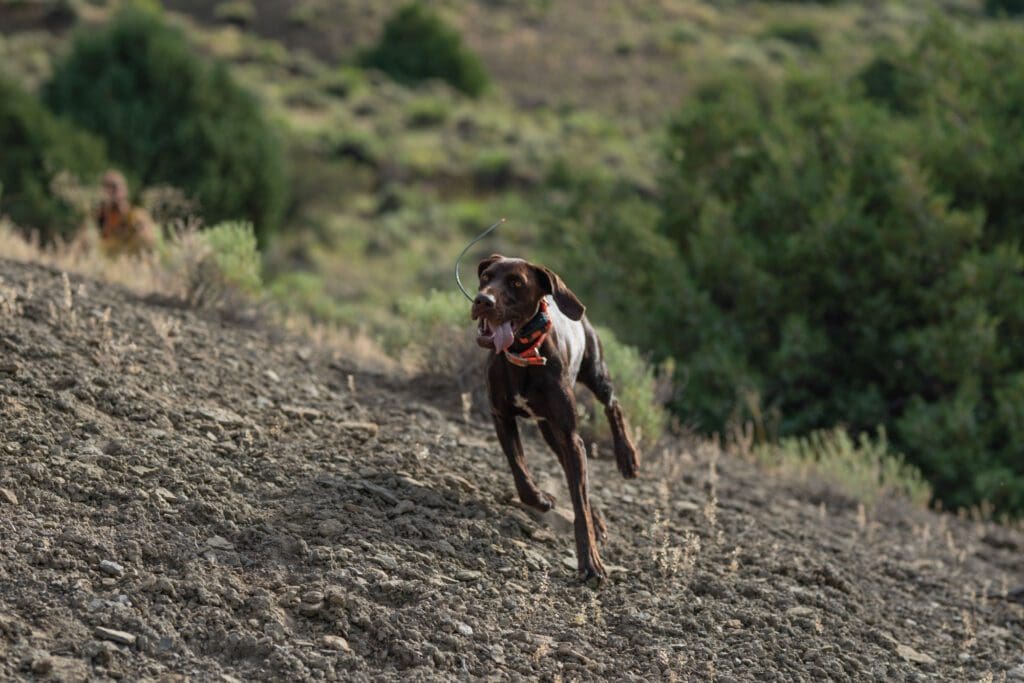Hunting and Fishing News & Blog Articles
Exercise-Induced HRI: Does Your Dog Need Help

By Eukanuba Staff
If you want your dogs to be sharp on Opening Day you’ll have to run them in the summer. But hot temperatures and high humidity can make it difficult. A gun dog’s drive may override his ability to know he’s overheating, so it’s up to every owner and handler to keep their dogs safe.
Know What to Look For
Running dogs in the summer means they may heat up faster than they can cool down. When a dog’s activity causes his body to generate more heat than he can dissipate he’s at risk of developing exertional or exercise-induced Heat Related Illness (HRI). Knowing the signs of HRI can help owners quickly respond to get dogs the help they need.
 Optimal training times are when the temperature plus the humidity is under 140.
Optimal training times are when the temperature plus the humidity is under 140.
A dog’s normal core body temperature range is between 99.5-102.5 degrees. That range accounts for different breeds, sizes, weights, ages, and condition, among other variables. When they’re working in the summer their core body temperature can rise above the normal range. The hot, humid weather makes it challenging for dogs to cool off. If their internal heat rises faster than they can cool then they may start to show signs from one of the three stages of HRI: heat stress, heat exhaustion, and heat stroke.
Every dog handles heat differently. Those not properly acclimated or conditioned could show signs faster than those that are fit and in good shape. Heat stress is the first stage and dogs may be noticeably more tired, run at a slower pace, and show a lack of focus. With the next stage, heat exhaustion, handlers may see dogs weaken and stumble. In the third stage, heat stroke, owners may see signs similar to heat stress or heat exhaustion along with vomiting, diarrhea, confusion, and even collapse, among others.
 Hard running bird dogs need plenty of water breaks in the summer.
Hard running bird dogs need plenty of water breaks in the summer.
If you believe your dog is showing signs of HRI then a call to a veterinarian for advice should be a priority. The chart below outlines some additional warning signs of the three stages of HRI as well as ways owners can help their dog cool down.
STAGE 1 – HEAT STRESS
| Clinical Signs | Actions to Take |
| Less animated behavior Visibly tired or moving at a slower pace Changes in the dog’s focus or readiness Change in attitude (ie: seems apprehensive) Excessive panting Pasty saliva in the mouth Increased thirst Feels overly warm to the touch Tongue excessively protruding out with a flattened end Cheeks pulled back revealing the full arcade of the teeth including the molars Brick red mucous membranes Heat cramps or muscle spasms | Take a break from the activity at hand. Sit in a shady area with a cool breeze and provide your dog with lots of water. Apply cool water to his paw pads and underbelly. Rinse out his mouth to remove any pasty saliva from his gums and tongue. Dab rubbing alcohol-soaked pads to the pinnae of the ears, in his armpits and in the groin area. The alcohol placed in these areas will help cool the surface blood immediately. Do not start exercising your dog until he is fully recovered, but even then, it might be best to rest him until the next day. Consult your vet for additional instruction. |
STAGE 2 – HEAT EXHAUSTION
| Clinical Signs | Actions to Take |
| Any of the signs from Stage 1, plus additional signs: Weakness or stumbling Mentally aware but too tired to react Excessive panting becomes uncontrollable Significant thirst Sunken, dry eyes Dry mouth, gums and nose Vomit or diarrhea Lack of skin elasticity Muscle tremors | Get your dog to the nearest vet immediately. Before heading to the vet, place a cool, wet towel on the bottom of his kennel. Be sure he is in a crate or other area large enough for him to lay on his side. It is important that your dog stretch out so there is maximum heat dissipation. Apply cool water to his paw pads and underbelly. Dab rubbing alcohol-soaked pads to the pinnae of the ears, in his armpits and in the groin area. If you have a fan on the cage door, turn it on. Absolutely do not put the dog in extremely cold water and never put ice on his skin. That extreme cold causes surface blood vessels to shrink and increases the risk of both dehydration and heatstroke. |
STAGE 3 – HEAT STROKE
| Clinical Signs | Actions to Take |
| Any of the signs from Stage 1 and 2, plus additional signs: Significant slowness or lack of coordination Weakness in the hind end Wobbly and unsteady Unresponsive or confused Incessant or noisy panting Dark urine or lack of urine Seizures Head tremors Shock Collapse Coma | Get your dog to the nearest vet immediately. Follow the before-mentioned actions from Stage 2 before you begin your drive to the nearest vet. |
 Gun dogs running in high elevations and in loose shale makes them work hard. Take breaks to help cool them down.
Gun dogs running in high elevations and in loose shale makes them work hard. Take breaks to help cool them down.
If arriving successfully on Opening Day is our goal then training in the summer is key. To get there together we’ll need to work as a team. Dogs don’t know that heat can hurt, but owners and handlers do. The responsibility is on us to help keep our dogs safe while running in the heat and humidity.
The post Exercise-Induced HRI: Does Your Dog Need Help appeared first on HuntingLife.com.
Copyright
© Hunting and Hunting Gear Reviews

